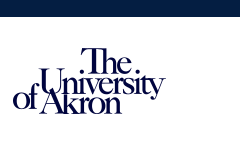Polymer Science Faculty Research
Title
Efficient Chemistry for Post-Electrospinning Nanofiber Modification
Document Type
Conference Proceeding
Publication Date
Spring 3-16-2014
Abstract
Polymeric nanofibers are attractive for tissue engineering applications. Nanofibers can be generated easily via electrospinning, and their morphology and dimensions can be tuned easily with solvent, concentration and processing conditions. Apart from the physical characteristics of nanofibers, the biochemical effects that are induced from the bioactive motifs presented on the surface of nanofibers also play an important role in the resulting behavior of cells on the materials. Efficient chemical methods aiming at efficient modification of electrospun fibers are needed to reduce potential biocompatibility concerns. In our research, 4-dibenzocyclooctynol (DIBO) and its derivative were used as initiators for the ring-opening polymerization of a number of different monomers like DIBO-PBLG, DIBO-PCL, DIBO-PLA, DIBO-(P(CL-co-OPD)) and so on. The presence of a DIBO group at the chain end of the polymers enables fast, efficient and metal-free functionalization. For further application of these materials, nanofiber-based scaffolds were generated via electrospinning, the nanofibers generated from these polymers bearing active DIBO groups on the surface of fibers available for post-fabrication functionalization in aqueous solution.
Publication Title
Abstracts of Papers of the American Chemical Society
Volume
247
Issue
232-POLY
Recommended Citation
Zheng, Jukuan; Reneker, Darrell H.; and Becker, Matthew, "Efficient Chemistry for Post-Electrospinning Nanofiber Modification" (2014). Polymer Science Faculty Research. 814.
https://ideaexchange.uakron.edu/polymerscience_ideas/814

